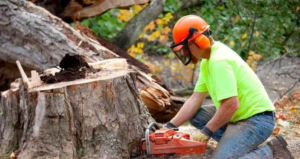Home Remodeling Temecula is exciting but also challenging. Be sure to plan for the best results.
Start by making a list of your core goals and non-negotiables. Be prepared to make changes as needed throughout the project. Ultimately, the most successful remodels combine aesthetics and functionality.

Whether you plan to sell your home in the future or want a space that feels more like “you,” aesthetic upgrades can make a big difference. By choosing a color palette that complements your desired style, you can create a cohesive look that makes your home feel inviting and comfortable. Moreover, color can also highlight architectural details and decor pieces, adding visual interest to your living space.
A defined style creates a consistent story throughout your house, influencing all decisions on the remodel. Whether it’s rustic, modern, or a blend, your style tells people about your personality and preferences. Defining your style is essential to the success of your remodel, as it will help you avoid making design mistakes that are difficult to correct later on.
The right lighting and accessories can also contribute to the overall aesthetic of your home. For example, a pendant light or a decorative mirror can add a pop of color and enhance your room’s functionality. You can also choose to use different materials and textures in your home to add depth to its design. For example, pairing a sleek leather couch with fluffy throw pillows can create a contrast between texture and color.
As sustainable living becomes increasingly important, many homeowners are seeking to upgrade their homes in ways that respect the environment and their own ethical values. New trends in home remodeling include eco-friendly appliances and smart home technology that allow you to monitor and control your energy use remotely. These changes are a great way to reduce your carbon footprint and improve the comfort and beauty of your home.
Another way to incorporate sustainable improvements is by incorporating natural elements into your home’s design. This can be done by using green roofs or by introducing water features into your living spaces. Incorporating natural features into your remodel can help you connect with nature and feel more relaxed in your home. Moreover, it can also help you create a healthier living space by improving air quality and reducing stress. By combining these natural elements into your home’s design, you can create a beautiful and environmentally friendly space that is also functional.
Functionality
Home remodeling isn’t just about aesthetics. It’s about making your home work better for you and your family. Whether it’s turning an unused attic into a home office, adding a sunroom to flood your living space with natural light, or changing your floor plan by knocking down walls, these changes improve functionality and provide you with a more comfortable and organized lifestyle.
Moreover, home renovations are an excellent way to increase the overall value of your property. Strategic updates, especially in key areas like the kitchen and bathroom, can add a significant amount to your resale value. Likewise, smart energy-efficient upgrades can lower your utility costs and possibly qualify you for tax incentives.
A good home remodeler will prioritize your needs over their own preferences. This will ensure that your project is completed in a timely manner and on budget. It’s also important to choose a contractor with extensive experience in this industry. They should have a portfolio of previous projects that demonstrate their skill and expertise. It’s also a good idea to ask friends and family for recommendations.
It’s essential to create a realistic budget before beginning your project. This will help you decide what to include in your renovation, how much it will cost, and how long it will take. Make sure to consider all the potential expenses, including materials, labor, permits, and contingencies. You can also explore different financing options to find the best fit for your budget.
Another important consideration is maintenance. You should know how much you’re willing to spend on maintenance and which design features require more regular upkeep. For example, if you’re interested in upgrading to marble countertops, you should understand that they will need more frequent maintenance than other types of countertop material.
Home remodeling is a constantly evolving process. Changes in societal needs and the availability of new technologies drive trends, opening up new possibilities for homeowners to customize their homes. For instance, homeowners are now focusing on eco-friendly and sustainable materials that can help reduce their carbon footprint and minimize energy consumption.
Energy efficiency
While aesthetics and functionality are important, the energy efficiency of a home is also an important consideration when considering a remodel. A well-performing building envelope saves energy and money, making a home more comfortable for its occupants, less vulnerable to extreme weather or power outages and better able to efficiently use renewable energy like rooftop solar panels. As part of a larger remodel project, it’s a good idea to consider adding insulation and air sealing to existing structures. A comprehensive remodeling project is also a great opportunity to consider renewable energy systems and other energy-efficient upgrades.
A major commitment comes with a home remodel, and if you’re going to invest in it, you want to ensure you’re hiring the best professionals for the job. Ask friends and family for recommendations and consult online resources to find reputable contractors. Once you’ve gathered a list of potential contractors, schedule consultations to discuss your project and get an estimate. A good contractor should be able to clearly define the scope of work and give you a clear idea of what to expect.
Home remodeling projects range from minor updates to a complete property overhaul. Regardless of the size or scope of your remodel, it’s a good idea to plan ahead and budget for your project. A well-planned remodel will help you avoid unexpected expenses and ensure that your home renovations meet your desired vision. This planning process can include gathering ideas, creating a detailed budget, and finding a team of qualified contractors and professionals to assist with your project.
When looking for a contractor, be sure to choose one who has experience with whole-home remodels. Ask for referrals from friends and family, and check out their websites to find out more about their qualifications, previous work and past clients. In addition, be sure to ask about their insurance and contracting licenses.
A comprehensive home remodel is a great investment that can add value to your home, improve its performance and make it more comfortable for you and your family. However, many homeowners don’t have enough cash saved to pay for the entire project. In such cases, it’s a good idea to explore your financing options. This may include savings, a line of credit, a home equity loan or mortgage, construction loans or borrowing from family members. Using these methods to finance your home energy savings improvements can make them more affordable and increase the return on your investment.
Value
Home remodeling can improve a property’s beauty and function. It can also increase its resale value and return on investment. However, it’s important to consider the market and neighborhood when choosing a remodeling project. For example, if you live in a neighborhood of older homes, a home improvement that makes your house look too much like a new build may deter potential buyers. In addition, the amount you get back on your renovations depends partly on the value of other homes in the neighborhood.
Home improvements that offer a high return on investment include kitchen and bathroom upgrades, exterior enhancements and functional upgrades in basements and attics. However, the ROI of a project can vary by region, and it’s important to consult with a real estate agent to ensure that your project will be cost-effective and appeal to prospective buyers.
It’s also important to consider how you’ll finance your remodel. While paying cash is ideal, many homeowners choose to take out a loan or equity line of credit. This can be a good option if you plan to sell your home within a few years, but it’s important to remember that interest payments will reduce your actual ROI.
If you’re planning to live in your home for a long time, it’s important to focus on improving your comfort and enjoyment of the space. Increasing your home’s value is important, but you should balance it with your own needs and preferences. Remember, not all homeowners share your taste and are willing to pay a premium for your personal touches.
One way to determine which projects will be the most cost-effective is by analyzing the average costs of remodeling and comparing them to the expected resale value. Each year, the respected trade publication/platform Remodeling analyzes costs for major renovation projects and estimates their value at resale. Their latest “2023 Cost vs. Value report” analyzed 22 projects in 150 markets nationwide and identified the top five improvements by return on investment. You can find similar reports for other regions by doing a quick online search.






